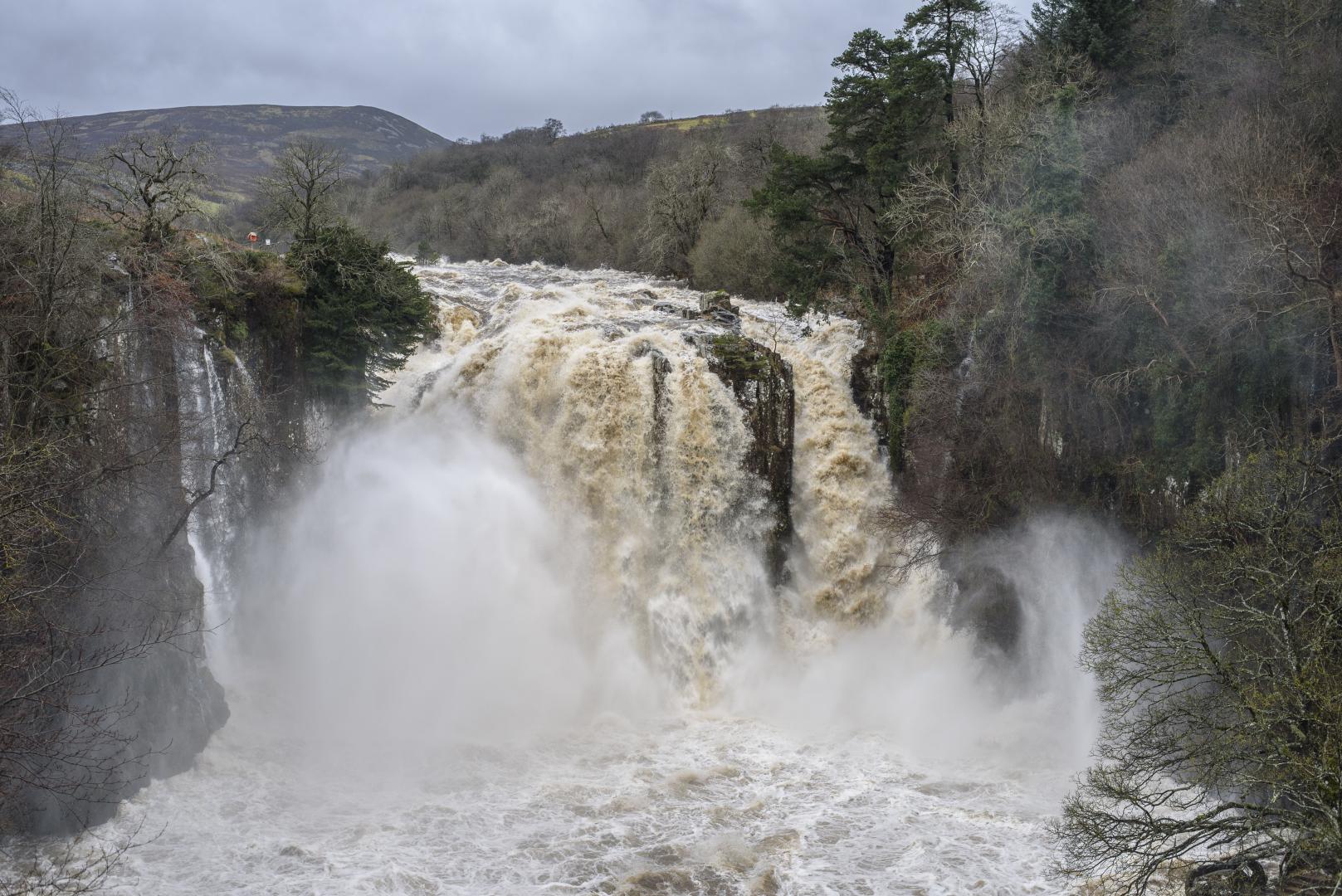Fishing the Tees with Andrew Wilkinson
STORM Ciara in February lifted the Tees to its tenth highest level on record – and while flood damage in Teesdale was limited compared to some other parts of the country, there was significant fish loss in our river.
Fortunately the Tees was not as badly affected as some other rivers, for the number of reservoirs on the river and its tributaries, slows the rate at which the river rises.
Environment Agency monitoring reveals that the Tees rose at 25cm an hour during and immediately after the storm, whereas the Tyne shot up at almost three times that rate (70cm an hour).
Fish in a raging river is the equivalent to us being caught in storm force winds. We take shelter and so do the fish.
As the water spills over into fields, so do the fish to get out of the main flow.
Then when the river recedes quickly, fish get stranded in shallow water then dry land.
Most of the fish lost were small species – minnows, gudgeon and stone loach. But some larger coarse fish and trout also died. The impact on the species shouldn’t be too damaging, but sudden and large fish loss of any species can impact on the population for years to come.
That’s the bad news out of the way – other latest developments are much more encouraging, on the Tees and for the sport of angling as a whole. The Tees Rivers Trust is continuing its impressive work to improve the river and its tributaries, to the benefit of all wildlife, fish stocks included, and people.
The trust encourages the public to engage in projects and discover the joy of rivers and the adjacent land.
Ben Lamb, of the Tees Rivers Trust, gave an update of the organisation’s work at the latest Angling Trust meeting in Piercebridge.
There is an ongoing project to improve habitat in and around Langley Beck, which flows through Staindrop.
Agricultural pollution is being tackled, while weirs are being removed to improve fish passage. Where weirs cannot be dismantled, there are plans to install fish passes.
Native white clawed crayfish are being monitored in Teesdale streams and rivers, while further downstream the Skerne is being improved by clearing silt and weed, creating gravel beds, and encouraging catchment friendly farming.
The Skerne through Darlington and Aycliffe may seem of little interest to Teesdale, but any work that improves habitat on any of the Tees tributaries, benefits the whole of the river system.
Ben reported that efforts are ongoing to control then eradicate invasive plants such as giant hogweed, which can cause nasty blisters and stings to human skin.
Himalayan balsam is also being tackled.
Farming can play its part for sheep will eat both species. They will seek it out even in lush pastures, and hogweed does not affect sheep or taint their meat.
Cattle will also eat hogweed, but can cause bankside erosion, so sheep offer a better option.
It may take 20 years to eradicate hogweed, but the good news is that private companies and local authorities are now helping fund the scheme, to add to the support of the Heritage Lottery Fund.
The Tees Rivers Trust works with schools and takes children onto the banks to see and help with the work being done. The trust organised a litter pick focusing mainly on plastics, and 600 people took along the length of the Tees.
The trust is also working on a major initiative to enable visitors and local anglers the chance to fish the Tees and its tributaries via online day tickets.
The Tees Angling Passport could help clubs and riparian owners raise funds, while also bringing a boost to the wider dale economy. It is estimated that the Tees salmon fishing day help in October 2018, boosted Teesdale’s economy by £10,000.
The new venture could bring in considerable revenue every year. Clubs can decide whether to take part and will have control over angler numbers, and can set their own rules.
Expert angler and guide Olly Shepherd, of Fly Fishing Yorkshire, is masterminding the scheme, and is expected to officially launch it soon, after completing preliminary work to gauge interest.
Meanwhile nationally angling is attracting far more females than it was a few years ago. Women’s football has grown massively over the last few years, and angling is not far behind.
About 34 per cent of all junior football is played by girls, while 25 per cent of all attendees at Angling Trust “get fishing” events in 2019 were female.
Older angers will recall the days when nothing much happened over the close season. But times are changing for the better, with local and national clubs, individuals and organisations all working hard and with great imagination to boost angling and the waterside environment. And by the end of March trout anglers will be back on the river.






